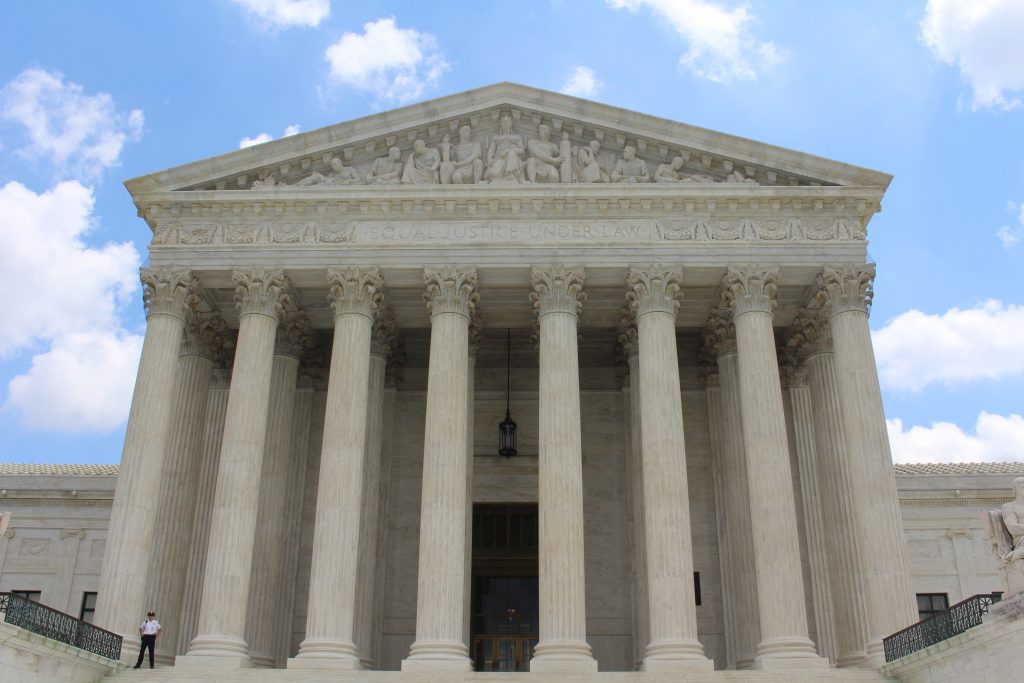
Today the Supreme Court resolved a decade of copyright litigation by supporting interoperability and openness, ruling that reimplementing an API by copying its declarations is legal fair use, even (or perhaps especially) when you’re building a competitive service. This was a case of two massive companies – Oracle and Google – fighting over Java, Android, and billions of dollars. But it was also about the quintessential user’s right and one of crucial importance to libraries: fair use. And after last year’s Georgia v. Public.Resource.Org decision, it has become the latest in a long line of Supreme Court decisions broadly supportive of fair use.
In a 6-2 decision, the Supreme Court held that Google’s copying of many declarations associated with the Java SE API (including only those lines of code that were needed to allow programmers to put their accrued talents to work in a new and transformative program with their own implementing code) was a fair use of that material as a matter of law. That means that this ruling applies to all APIs, not just the one at issue here.
“This decision is a win for the Open Web. In our digital world, businesses, nonprofits, libraries and individual developers use APIs everyday,” says Brewster Kahle, Internet Archive’s founder and Internet Hall of Famer. “We have seen copyright used as a tool to create enclosures and walled gardens. But the Court was clear: copyright cannot be used to harm the public interest.”
Importantly, the Court held that reimplementing the Java API was fair use even though Google copied the material intentionally. That fact actually supported a finding of fair use. That’s because Google’s purpose was “to allow programmers to work in a different computing environment without discarding a portion of a familiar programming language.” Put another way, Google’s actions were in support of interoperability. And fair use protects it.
In contrast, Oracle sought to profit from the developers’ familiarity by locking them into its own environment and forcing Google to pay for a license–what the Court described as a “tax”–in order to access it. The Court held this kind of “tax”, in derogation of interoperability, did not further the goals of copyright. That was because, it explained, copyright seeks to incentivize the creation of new works. Incentivizing the creation of new works was deemed more important than allowing for the monopolization of aspects of the old. That was particularly true here, where Google copied these lines of code not because of their “creativity or beauty but because they would allow programmers to bring their skills to a new smartphone computing environment.” Enforcing copyright in these circumstances “risks causing creativity-related harms to the public,” frustrating the goals of copyright.
While many hoped that the Court would rule directly on the question of software copyrightability, which may have more squarely helped small projects take on goliaths, this ruling remains a very good thing. It is a win for interoperability, a win for fair use, and a win for the open principles that form the foundation of so much of the internet today.
“We have to wonder whether a system that took ten years and tens of million dollars worth of litigation to reach this outcome reflects a copyright system that is as fair as we need it to be,” says Brewster Kahle. “Today, thank goodness the fair use system was reaffirmed. This decision will have broad, positive benefits for openness, innovation and competition.”
Pingback: the consequences of the sentence in Oracle vs. Google - Paudal
Pingback: Xataka – Una extraordinaria noticia para todos los desarrolladores de software: las consecuencias de la sentencia en Oracle vs. Google – Yacal
Pingback: Una extraordinaria noticia para todos los desarrolladores de software: las consecuencias de la sentencia en Oracle vs. Google | Xataka | El Socio
Pingback: Una extraordinaria noticia para todos los desarrolladores de software: las consecuencias de la sentencia en Oracle vs. Google – Recursos Humanos
thanks for sharing valuable information
Wow, that’s great!!!